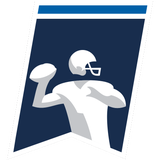
Power conferences, NCAA to vote on $2.7B settlement as smaller leagues balk at terms
University presidents around the country are scheduled to meet this week to vote on whether to accept a proposed settlement of an antitrust lawsuit that would cost the NCAA nearly $3 billion and create a landmark revenue-sharing system with college athletes.
The terms of the agreement have met some pushback from Division I conferences that do not compete in major college football. Leaders of those leagues say they are being asked to bear an undue financial burden on the damages portion of the settlement.
Attorneys for the defendants in House vs. NCAA gave college sports leaders until Thursday to agree to terms of a deal. The defendants are the NCAA and the Power 5 conferences — the Atlantic Coast, Big Ten, Big 12, Pac-12 and Southeastern.
The presidential boards of the NCAA and the five conferences must individually vote to accept the settlement. That includes the current full Pac-12 membership before that league shrinks to two schools later this summer.
The NCAA is expected to cover some $2.7 billion in damages over 10 years to current and former college athletes, dating to 2016, who were denied by NCAA rules the ability to earn money from sponsorship and endorsement deals.
About $1.6 billion of that will be from withheld distributions to member schools — money that would normally be sent to the schools by the NCAA, according to several people with direct knowledge of the proposal. They spoke with The Associated Press on condition of anonymity because settlement details were not being discussed publicly.
Withheld distributions from the Power 5 conferences — currently comprised of 69 schools — are slated to cover 40% of that $1.6 billion. The other 27 Division I conferences, currently comprised of 283 schools, will cover the other 60%.
While the Power 5 annually receive the largest total distributions from the NCAA — and their per school deduction would be larger under the model proposed by the NCAA — schools in conferences that do not play big-time football rely far more on those distributions to support much smaller budgets.
"Basketball-centric leagues are really getting hit," said an administrator from a conference that does not compete in the highest tier of Division I football, known as the Bowl Subdivision.
The NCAA annually distributes about $700 million to its members. NCAA revenues were nearly $1.3 billion last year, most of which comes from its television rights contract for the men's Division I basketball tournament with CBS and Warner Bros. Discovery.
Under the proposed settlement, each conference’s obligation will be equal to its percentage of the total NCAA distribution to its members from 2016-2024, two of the people knowledge of the agreement told AP. The NCAA has some 1,100 member schools with more than 500,000 athletes across three divisions; Division I, the highest level of competition and by far the most lucrative, has about 352 schools and 190,000 athletes.
The administrator who spoke with the AP said that in some smaller Division I conferences, NCAA distributions account for more than 50% of a school's athletic revenue; the distributions account for less than 10% of athletic revenue at most power conference schools.
Leaders of the smaller conferences have sent multiple memos to the NCAA to raise concerns. In one letter, obtained by AP on Monday, the non-Bowl Subdivision conferences said they support the need for a settlement.
"However, as commissioners of non-defendant Division I conferences, we do not support the current model proposed by the NCAA for allocating back damages, which unreasonably impacts our conferences," the commissioners wrote. "We have not been involved in the settlement negotiations or damage allocation modeling, and learned of the settlement status two weeks ago."
The memo proposed having the Power 5 conferences covering close to 60% of the $1.6 billion, essentially flipping the plan's 60-40 share.
"It hits us harder. We're dependent on NCAA distributions," said another administrator from a non-FBS football conference.
Steve Berman, one of the lead attorneys for the plaintiffs, told AP last week he believed both sides were progressing toward a settlement in the case. NCAA President Charlie Baker has said he was "hopeful" an agreement would be reached.
ACC Commissioner Jim Phillips said his board of presidents and chancellors would be meeting this week to vote on the proposal, with a simple majority needed to approve. Big 12 presidents are scheduled to meet Tuesday and the SEC presidents have a meeting planned for Thursday, people familiar with those meetings told AP.
Big Ten officials are gathering in Los Angeles this week for their spring meetings.
The NCAA Division I Board of Directors and Board of Governors also must sign off on the agreement, which will cover the House case and at least two other antitrust suits: Hubbard vs. the NCAA and Carter vs. the NCAA. It was unclear if another lawsuit, Fontenot vs. the NCAA, will be part of the settlement.
Reporting by The Associated Press.
Want great stories delivered right to your inbox? Create or log in to your FOX Sports account, follow leagues, teams and players to receive a personalized newsletter daily!











